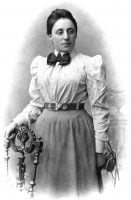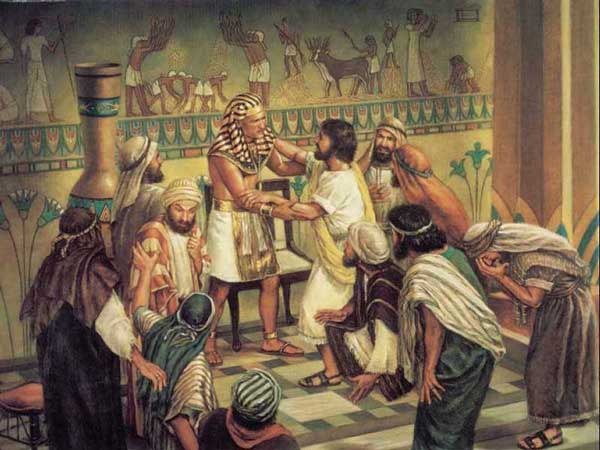In the Torah portion Miketz, Pharaoh has two dreams. He wakes up agitated and calls on all the wise men of Egypt to interpret his dreams. Nobody is able to come up with an acceptable interpretation, so they fetch Joseph from prison and he successfully interprets the dreams of Pharaoh—that there will be seven years of plenty followed by seven years of famine. Joseph proceeds to instruct Pharaoh on how to prepare for the seven years of famine.
In the previous posts, “Interpreting Dreams” and “Joseph—the Master of Time,” we already explained how Joseph was able to interpret dreams in terms of units of time and why Pharaoh appointed Joseph as the viceroy of Egypt. This story, however, still has mysteries to unlock. Perhaps it can teach us more lessons.
In Talmudic and Kabbalah literature, Joseph is called Yosef HaTzadik—Joseph the Tzadik (a righteous and holy man). He certainly had a prophetic vision. When a prophet or a tzadik foresees impending calamity, his job is to save his generation through prayer, fasting, and a call for repentance. As we read in the Book of Jonah, after Jonah prophesized the impending catastrophe to the people of Nineveh, they repented of their sins and G‑d annulled His decree to destroy the city. As recorded in the Book of Esther, when Mordechai HaTzadik learned from Esther about the evil decree of a pogrom that a treacherous minister had convinced the King of Persia to impose on the Jews of Persia, Mordechai ordered a three-day fast, he donned sackcloth, and he called on the Jewish people to repent. This repentance averted the evil decree and led to a great victory, which we celebrate on Purim to this day. Such stories are abundant in Jewish history. However, in this instance, Joseph does not offer his blessing to Pharaoh; he does not turn to G‑d in prayer; he does not proclaim a fast, nor does he call on Egyptians to repent of their evil ways. Instead, he takes a very pragmatic approach and advises Pharaoh to start collecting a surplus of food—hardly an approach characteristic of a prophet or holy man.
A careful examination of the Pharaoh’s dreams reveals a curious detail: there were to be seven years of plenty and seven years of famine. There is no apparent reason why the famine should have lasted exactly the same number of years as the time of plenty. This symmetry—seven years of plenty versus seven years of famine—can be expressed as +7 and -7 — seven good years and seven bad years. This simple mathematical symmetry provided a hint that led Joseph to take his programmatic approach.

If physicists have one favorite word, this word is “symmetry.” The whole history of the development of theoretical physics in the twentieth century was an ever-growing appreciation for the importance of symmetry. It all started with one of the most beautiful and most important theorems in the whole of theoretical physics—Noether’s theorem.
Emmy Noether, a Jewish-German mathematician proved in 1915 that paired symmetry with laws of conservation. For example, translational symmetry within a physical system results in the conservation of energy, whereas rotational symmetry in a physical system results in the conservation of angular momentum, among other findings. Later, in the twentieth century, group theory (a mathematical theory of symmetry) was used to develop the Standard Model of particle physics—the theory that predicted the existence of all known subatomic particles.
Whereas symmetry predicts the existence of most particles, a few particles were predicted by so-called spontaneous symmetry-breaking. We wrote about spontaneous symmetry breaking in the earlier posts “The Entangled Twins” and “Entangled Sisters.” The Higgs boson and the Z boson were predicted based on the spontaneous symmetry breaking.

The stories of Jacob and Esau and Rachel and Leah were stories of spontaneous symmetry breaking. Both twins were symmetrical, as it were, but G‑d chose Jacob over Esau and Jacob loved Rachel over Leah.
The dreams of Pharaoh contained two symmetrical scenarios: seven good years and seven bad years, or simply +7 and -7. Had there been the slightest possibility that only one of these solutions would be realized, of course, Joseph would have offered blessings to Pharaoh, prayed to the Almighty, and called upon Egyptians to repent. The fact that there were two dreams, however, told Joseph that there would be no spontaneous symmetry-breaking here—both scenarios would be realized. Prayers would not help; seven years of famine were coming. What was needed was swift and decisive action—gathering up a food supply. There is a time to pray and a time to act. The genius of Joseph was that he knew the difference.
For this reason, Joseph tells Pharaoh:
And for that the dream was doubled unto Pharaoh twice, it is because the thing is established by G‑d… (Genesis 41:32)
In other words, Joseph told Pharaoh that both symmetrical scenarios were destined to come to pass. As the Nobel laureate in physics Eugene Wigner used to say, “It’s all about symmetry!”

CHAG SAMEACH
And
THANK YOU.
What a prolific insight into the spiritual phenomenon of dream interpretation. It carried symbols that affirms what would be — and not even prayer would change it. It is enlightening to know that sometimes, some things will be what their destined to be. I journalize dozens and dozens of my dreams, and I wrestle to uncover their meanings. But this essay has awaken me. Thanks so much for depositing this into my life.